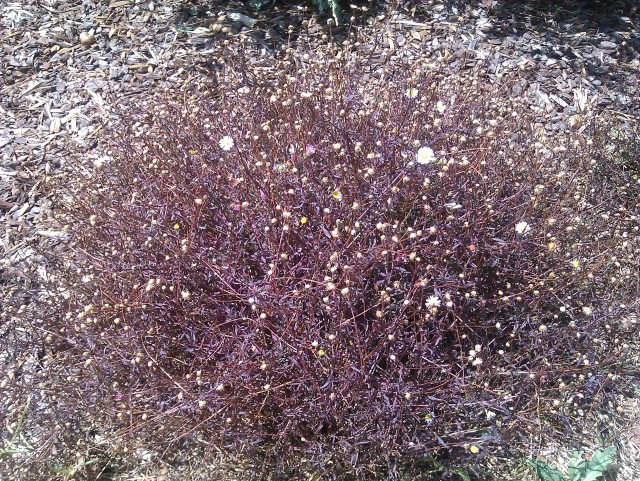Question Seaside Daisy 1
Seaside Daisy 1
QUESTION: Hi Donna,
I'm looking after a friends place who has a lovely border of Seaside Daisies, which she has painstaking tried to get going. We're in South Australia and just had a period of very hot, dry couple of weeks. During the extreme hot spell a large portion of the plants located in full sun seemed to dry out, the stems turning a brown purply colour. Some plants still have green on the stems closer to the centre of the plant, others don't. I'm a bit concerned because I understood this plant to be quite hardy and drought tolerant, and it's not my garden and wanted to keep it nice for my friend who has put a lot of effort into it. We're both novice gardeners, so were hoping you could offer a few suggestions please? I've attached a photo of the plant.
1)Is this 'brown purply' stem colour a part of the plant's cycle given the conditions? Will it re-juvinate or is it an indication that they could be dying?
2)Should I just prune the plants back? If so, just the dead blooms or a bit more? Some of the dried shrubs are starting to produce a few flowers, I'm hoping this is a hopeful sign, and didn't want to discourage this new growth?
I'd be grateful for any other ideas or suggestions.
Thanks in advance.
Renee
ANSWER: Hello Renee, and greetings from the other side of the world!
I have actually been watching Gardening Australia for many years, and am familiar with your climate and the challenges gardeners face.
The Seaside Daisy is an excellent plant for the conditions of your friends. However, it is best suited for places with a TEMPORARY drought, and yours is not temporary. It blooms from our May to our October, and then does tend to die down in October in the US, which would be spring for you. And it is usually described as a short-lived perennial, although lots of love can keep it going for a few seasons. It should be cut well back in your late fall. It MAY be dying down, but let's take some steps to make certain it doesn't die.
I would suggest three steps:
Remove the top level dead growth down to live material, in so far as you can.
If possible, apply a surface composting mulch. Pine Bark would be great, but I doubt that you have it. It would cool the ground a bit.
This may not be possible give your drought and watering restrictions, but any moisture you could get to it after you cut it back and before you mulch it would help. Not a great deal, though, because this plant prefers dryness.
The step that is the most important, and which would be done as quickly as possible, is cutting it back.
Does this make sense? Please feel free to write again if you have additional questions or if this is unclear.
Regards,
Donna
---------- FOLLOW-UP ----------
QUESTION: Thanks Donna, I appreciate your feedback.
Just a question regarding how much to cut it back. You've suggested to "remove the top level dead growth down to live material, in so far as you can". Some of the plants don't seem to have ANY green growth :{, just all purply stems, while some plants do have a small amount of green growth closer to the ground. What would you suggest in terms of how much to prune those plants with no visible greenery?
Thanks again.
AnswerHi Renee,
I would prune them to the ground if it is feasible. The dieback seems to be part of the growth cycle. Leave the roots, in case this is just part of life for a seaside daisy. But I would cut them as low as possible, which will not hurt the plant in any way.
Does this help?
Regards,
Donna






